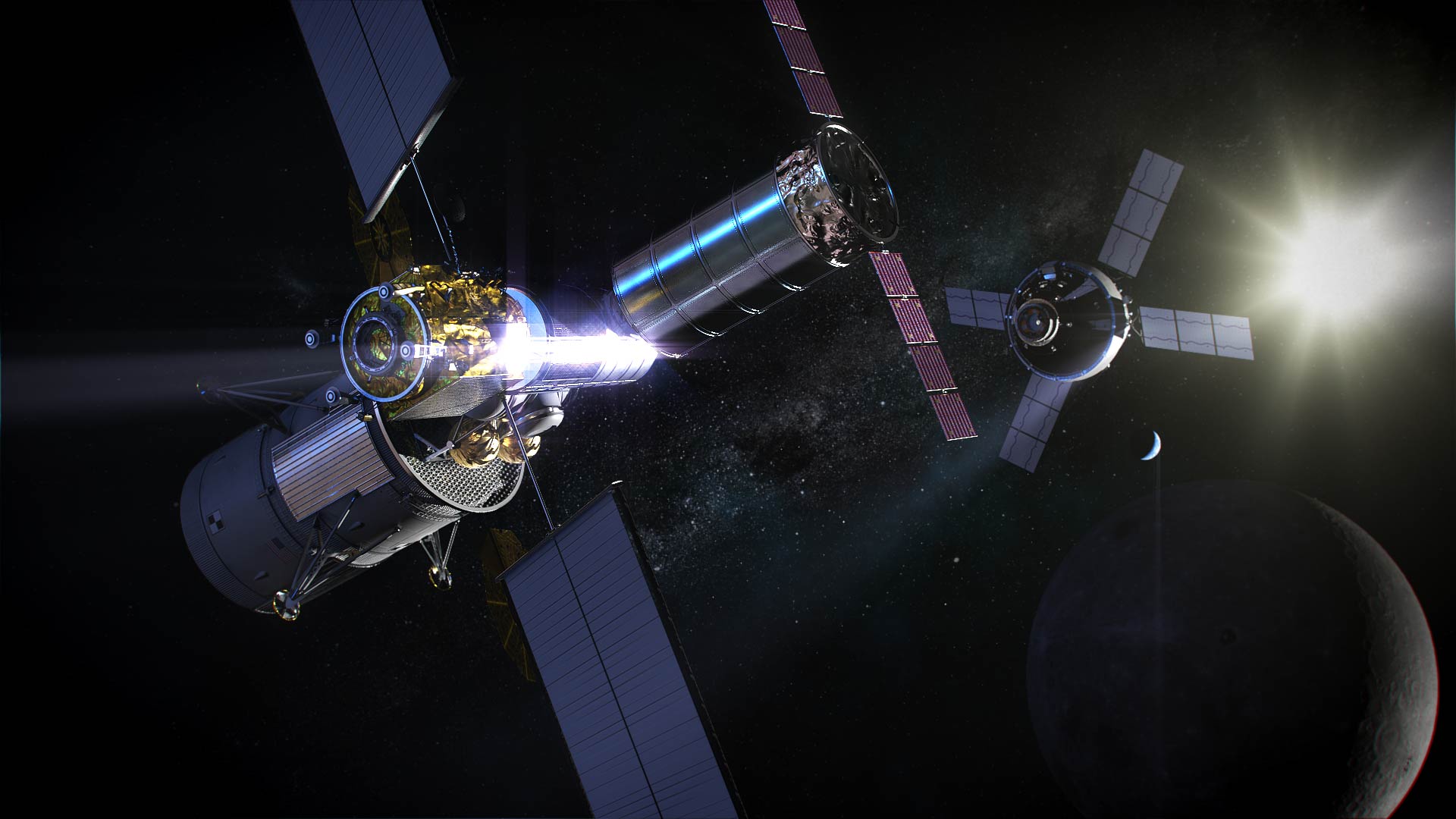By Laura Aguiar
NASA’s Kennedy Space Center
In the latest step in sending astronauts to the lunar surface within five years, NASA issued a draft solicitation June 14 to industry seeking comments for a future opportunity for American companies to deliver cargo and other supplies to the Gateway in lunar orbit.
The first logistics service to the orbital outpost is expected to deliver science, cargo and other supplies in support of the agency’s new Artemis lunar exploration program, which includes sending the first woman and the next man to the surface of the Moon by 2024.
Last fall, NASA asked American companies for ideas on how to best supply the Gateway, which will be located in an orbit around the Moon about 250,000 miles from Earth. The Gateway will be a command and service module for missions to the lunar surface and eventually, exploration farther into the solar system. Following up on that initial request for information, today NASA published a draft solicitation for industry comments on its logistics approach, which are due July 10, 2019.
“We’re asking industry to provide a spacecraft to deliver cargo and other supplies to the Gateway. It will dock to the orbital outpost, but will be responsible for generating its own power,” said Marshall Smith, director, human lunar exploration programs at NASA Headquarters in Washington. “We’re using the Moon as a proving ground for Mars to develop the technologies and systems we need for exploration farther into the solar system, so we look forward to seeing how industry responds to our upcoming solicitation, and potentially awarding multiple contracts for this lunar service.”
This latest call is mirroring similar cargo resupply services the agency pioneered with industry closer to home. NASA led the way for commercialization of low-Earth orbit, and is now providing new opportunities for private companies in deep space.
“The Gateway, and specifically our logistics supply requirements, enables the deep space supply chain, taking the next step toward further commercialization of space,” said Mark Wiese, NASA’s Gateway logistics element manager at Kennedy Space Center in Florida. “In addition to delivering cargo, science and other supplies to the Gateway with these services, there’s potential for an extension to industry to deliver other elements of our lunar architecture with this solicitation.”
A formal solicitation for a firm-fixed price contract is expected this summer. NASA anticipates the maximum contract award for all Gateway services over the course of 15 years will be valued at $7 billion.
NASA will host an industry day forum in Florida on June 26 to answer questions and explain the proposed approach for logistic deliveries. Additional details about that opportunity for industry are available online.
This announcement comes on the heels of other recent agency efforts to accelerate its Moon to Mars exploration plans. At the end of May, NASA awarded a contract to Maxar Technologies to build, launch, and demonstrate in space the power and propulsion element of the Gateway. And ahead of sending astronauts to the Moon, the agency will use a series of commercial Moon deliveries to send a suite of science instruments and technology demonstrations to the surface to continue studying Earth’s nearest neighbor. NASA is also working with 11 companies to study the proposed architecture for a new integrated human landing system, which would be staged at the Gateway for missions to the lunar surface.
Charged with returning to the Moon within five years, NASA’s lunar exploration plans are based on a two-phase approach: the first is focused on speed – landing on the Moon by 2024 – while the second will establish a sustained human presence on and around the Moon by 2028. The agency will use what we learn on the Moon to prepare for the next giant leap – sending astronauts to Mars.
For more information about NASA’s Moon to Mars exploration plans, visit:
























